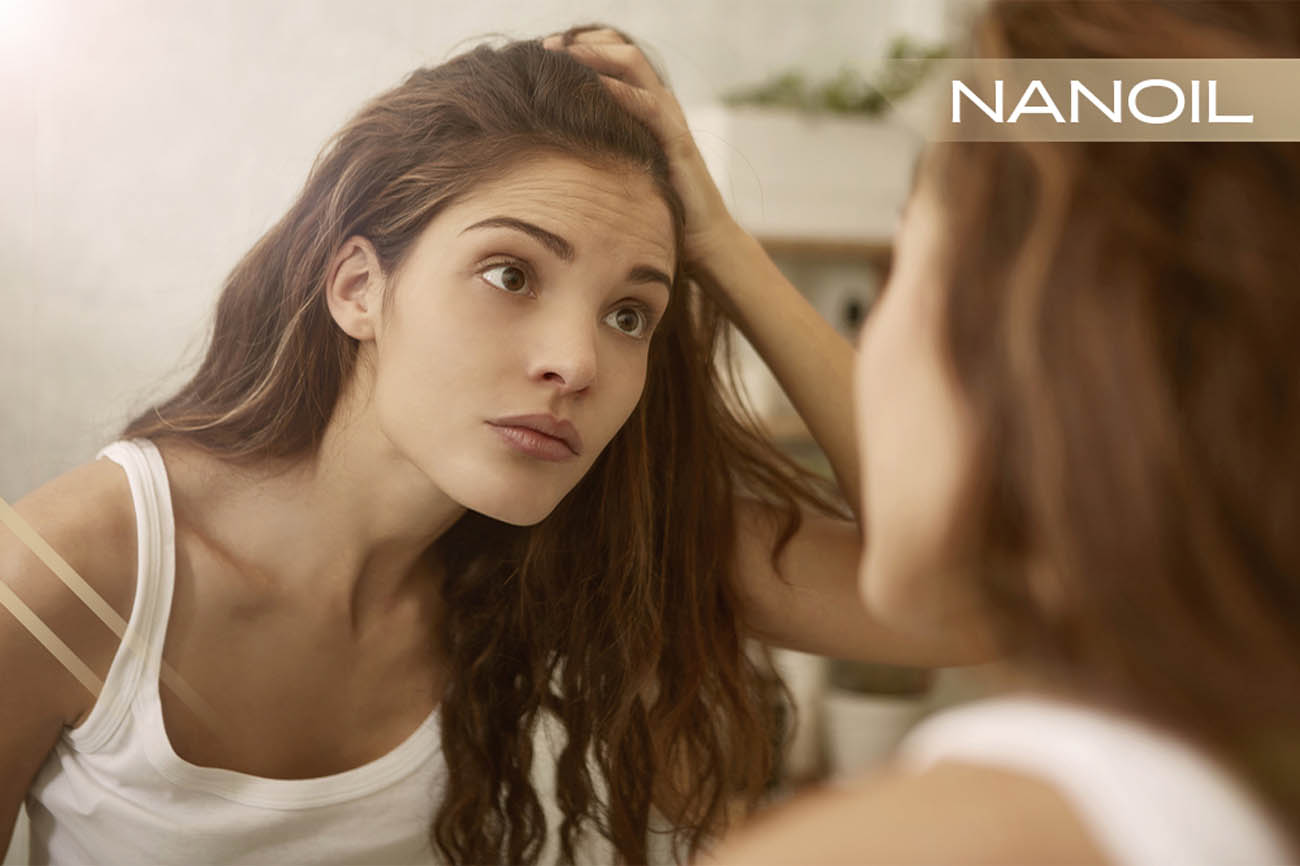- NANOIL Products
- Oils
- Face serums
- Hair masks
- Shampoos
- Hair conditioners
- Hair styling
- Hair Porosity Test
- Blog
- Contact

The scalp acid-base balance is an issue we know little about. What is the pH of your scalp? How to check it? How to restore pH balance? Let’s go back to chemistry lessons so that you can find out what your hair needs and what may leave your strands damaged!
Without doubts, we are doing progress in terms of hair care. We are becoming more conscious, analyze ingredients, choose natural products and consider hair porosity while shopping for hair products. Let’s move one step further and think why pH of the scalp matters so much in hair care. It turns out that one digit clearly defines whether a product is going to make your hair dry or not.

The pH scale is like some kind of an indicator which determines the degree of acidity and alkalinity of water solutions – everything containing water (including products and… skin).
The pH scale ranges from 0 to 14. The higher the acidity, the lower the pH. Simply put: 0 is maximally acidic and typical to hydrochloric acid whereas 14 is maximally alkaline and characteristic for NaOH.
< 7 – acidic pH
7 – neutral pH
> 7 – alkaline pH
Even our skin has its natural pH and its balance should not be disturbed because it may end up with many hair care problems. It is the same for both body skin and scalp. Too bad, few people know what the natural scalp pH is. This is what triggers problems such as difficulties choosing the right hair care products.
Let’s remember that the proper pH of scalp is slightly acidic – 5.5.
Interestingly, our hair has its natural pH as well and differs from the value presented above. A healthy hair stem has more acidic pH that equals 3.6. The difference is quite big. Luckily, both values are classified as acidic so you don’t have to use products of different pH for hair and scalp.
1. We can find out if it is not the disturbed acid-base balance of scalp to be blamed for hair problems e.g. dry hair, scalp irritation, frizzy flyaways, dandruff. In this case, restoring the pH may solve the problems and let us forget about damaged hair.
2. The issue of the choice of proper hair care products is easier. We should pick the ones having neutral pH for the scalp. Contrary to appearances, we do not mean it should equal 7; it should be hair friendly – slightly acidic.
The knowledge about the scalp and hair pH also comes in useful during hairstyling treatments and chemical processing. Keratin, or the building block of hair, is dissolved in strongly alkaline (pH > 11) or strongly acidic (pH < 3) environment. Bonds between hair cuticles loosen so having hair colored is possible. Most hair treatments should be done in the environment with clearly defined pH.
Changes in pH levels can be caused by cosmetics, wrong diet, poorly hydrated body, hypoxia, the season of the year or the time of the day. Optimal pH in skin may be a bit lower in men, youngsters and dark-skinned people. If the differences are slight, they have little impact on the state of scalp and hair. Unfortunately, a largely increased pH:
The standard pH test requires the use of indicators, or substances which have a specific color depending on the pH of a solution. Litmus is the most popular; the name of the measuring litmus paper was derived from it. Using litmus paper is the easiest way to define the pH of scalp or products that we are going to apply to hair.
It is important that the strips have a wide range – from 0 to 14. We gently soak a tissue paper in a solution and observe how the color changes. A range of colors and descriptions should come with the set.
A more expensive method requires the use of an electronic pH meter with a glass electrode. It is much more precise, defining pH with accuracy to two decimal places.
Since we already know the proper pH of hair and scalp, and we know the risks of the acid-base imbalance, it is time we moved on to keep the pH levels balanced. Using the right products is the easiest solution. Shampoos cleansing the scalp have the biggest impact on the pH value. Similarly to most soaps, they have high pH which may disturb the natural balance in epidermis and trigger irritations.
Products restoring scalp & hair pH:
On the one hand, a neutral pH shampoo comes in useful – e.g. the one which contains syndets (synthetic washing agents free of alkaline soap) instead of standard detergents. Interestingly, kids shampoos have high pH (around 7.5) because that is the pH of human tears; after all, these products aim at preventing eye irritation. You may as well try washing hair using different methods e.g. SLS-free conditioners.
In most cases, natural oils have pH ideally answering the needs of hair (around 4-6). It is a brilliant piece of information for the lovers of natural hair care because it means that hair and scalp oil treatment does not disturb the acid-base balance.
Moreover, some oils, e.g. jojoba oil or pine oil, regulate the pH levels, supporting the proper function of scalp and preventing problems such as dandruff, hair loss, scalp irritation. All you must do is regularly rub them in scalp – not only does it let you keep pH balance but also guarantees sufficient moisture and nutrients.
Leave your email address and we ll notify you when it s back in stock.
Comments: #0